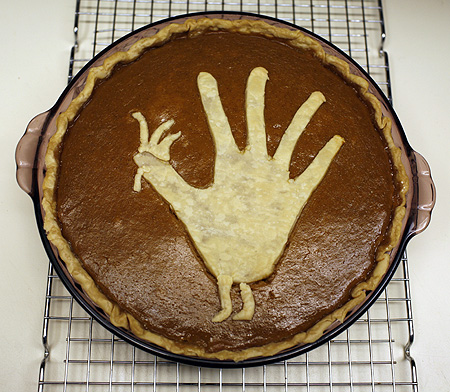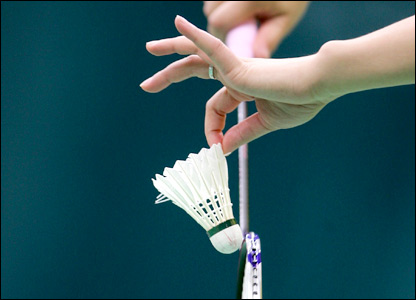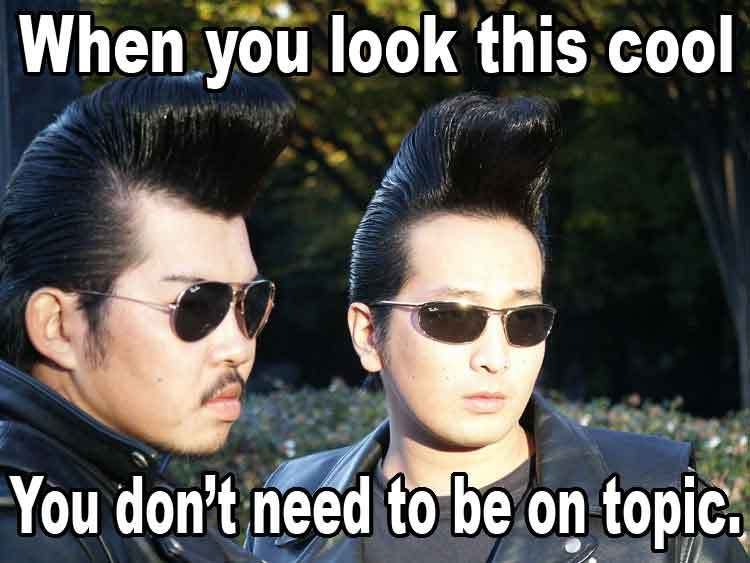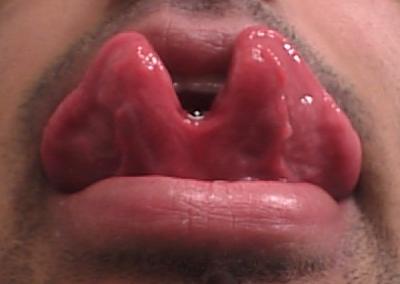An older post from a different blog.
Did you know that dentists have been using cloves as an antibacterial agent for years?

Did you know that cloves are an essential ingredient in pumpkin pie?

Guess what my mouth tastes like in the middle of July.

HA! I bet you looked at that bee and thought “What? How did she go from teeth and cloves and pie to bees?” I didn’t. I just put a picture of a bee there to see if you were paying attention. Congratulations. You passed and may read on.
I wish furniture came in a greater variety of heights. If it did, maybe the corner of the side table and the dining table wouldn’t come together to form a passage survived by none when the lights are out.

WHY. OH WHY DID WE DECIDE TO TRIM ALL OF OUR FURNITURE IN TETANUS INFESTED RUSTY OLD SWORDS.
If we were to record the frequency of stubbed toes, bruised thighs and compressed solar plexuses around here against the number of corners and obstacles, we would see a rather frightening correspondence. Statistics would paint a horrifying picture, one of chaos and fear. One that might just suggest that we are outnumbered. That the furniture is winning.

That’s why I burn divans.
…Yes, I know that’s not a divan. Shut up.
I was going to say something AWESOME. What was it?
Hmmm
I was trading emails with an old Audiology professor recently (By the way, Dr. Thunder, if you ever read this you ROCK. Continue, sir, to do so.) and remembered a lecture in which we studied how we make and interpret sound.
Do you guys know how sound is made and shaped?
Okay. We’re gonna get lecture-y but hold on. I’m gonna make it fun.

AS COOL AS THIS.
So, sound- we’ll be using speech specifically, because it’s what I know best- is formed in the throat, at the vocal folds. (Only n00bs call them the ‘voice box’. puh-LEASE.)
Put your hands together like a clap. Keep your fingertips and the heels of your hands touching, but bend your hands so that they form a ring.
Here, pretend you’re holding a really big glass of beer and you can just barely get both hands around. (And, pretend that you don’t have thumbs. Pretend you lost them horribly in a freak badminton accident.)

Come to think of it, you got off EASY.
So, that’s basically how your vocal folds look while they’re resting. Because, you know, you have to breathe and swallow and occasionally stick swords down there to earn a few bucks from a gawking crowd. Eh. It’s a living.
So, okay. What happens when you speak is you clap (keeping your fingertips together and the heels of your hands touching), REALLY quickly.
So quickly, in fact, that if we could clap as quickly as our vocal folds vibrate, we would all be paying homage to our god-like fairy overlords.

I’m onto you, ladies.
(Bear in mind, your vocal folds don’t just clap together. There’s a whole jell-0/raw meat like bit where they clap as a waving tide. Kind of like how that squid with kneessteers his creepy little self about. (Hey, remember that time I made it sound like that squid with knees was little? Hell no. That thing could probably give our fairy overlords a run for their money.))

And then like-

Any way, so, that’s how your vocal folds work. You can drop your hands now. I’m bored with them.
So, now, what I’m about to say may sound weird to you. But the sound that comes out from the vocal folds directly? It ain’t speech, buddy. In fact, you would be hard pressed to tell the difference between recordings vocal fold sound production and your cell phone on vibrate.

Look, it was either Elmo or a picture of what ELSE comes up when I search ‘vibrating thingy’.
At the vocal folds. All we do is buzz.
But we push that sound upwards, right. It get’s pushed up our throats, turns into our mouths and noses and forces past teeth, lips and tongue and comes out as a pitched, toned work of ART.

Put your hand on your adam’s apple. If you don’t know where that is, put your hand against the front of your throat and swallow.

Probably not that hard.
Feel that thing move?
That’s where the action takes place.
So, the buzzing sound from there moves up about 2 inches through our throats, cartilage and tissue and muscle and mucus, all soft and absorbent, taking away a lot of that roughness, like sanding a stone down with rough sandpaper. Smoother. Not shiny yet.

Look. You were either going to get a picture of Myoelastic Aerodynamic Theory of Phonation, or Bernoulli and at least THIS picture looks almost rude.
The sound next goes through our nose and mouth, turning nearly 90-degrees into our nasal cavities (the cheeks and so forth) and mouths. We’ve pushed the sound through the basic refining and now we’re putting into cavities. Your mouth counts as one, so do your nasal passages and assorted chambers.

Sinus infections. Ech.
So, we get the sound into these cavities and it echoes around a little. Then we form it.
You sit there and make an ‘AH’ sound. Your mouth is open, your tongue is down. Lift your tongue and only your tongue and that ‘AHHH’ begins to sound like an ‘ELLL’. Lower your tongue and instead round your lips. ‘AH’ becomes ‘OH’.

This making sense yet?
See, you make this rough sound and refine it through your throat and nose and mouth and then you shape it, form it into sounds that we understand.
Words are just sounds mashed together.
What’s REALLY cool is how our mouths can move faster than our sounds, already moving to form sounds before we’re ready to make them.
Dude. You guys. We are SO cool.

I’ll take questions. Your homework is to sit around and play with the sounds you can make, paying attention to how you hold your tongue, lips and teeth and whether you feel like you make that sound through your nose or your mouth. (Hint. You make 3 sounds through your nose. One of them is ‘-ng’ and the other two are letters of the alphabet.)
Also, tell me. When you make the ’ssss’ sound, do you put your tongue down against the back of your teeth, or up, nearer the roof of your mouth?

Or both, which makes you a cheater.